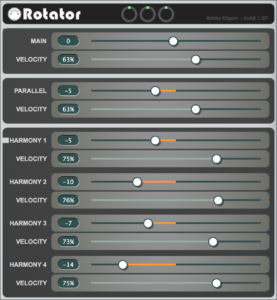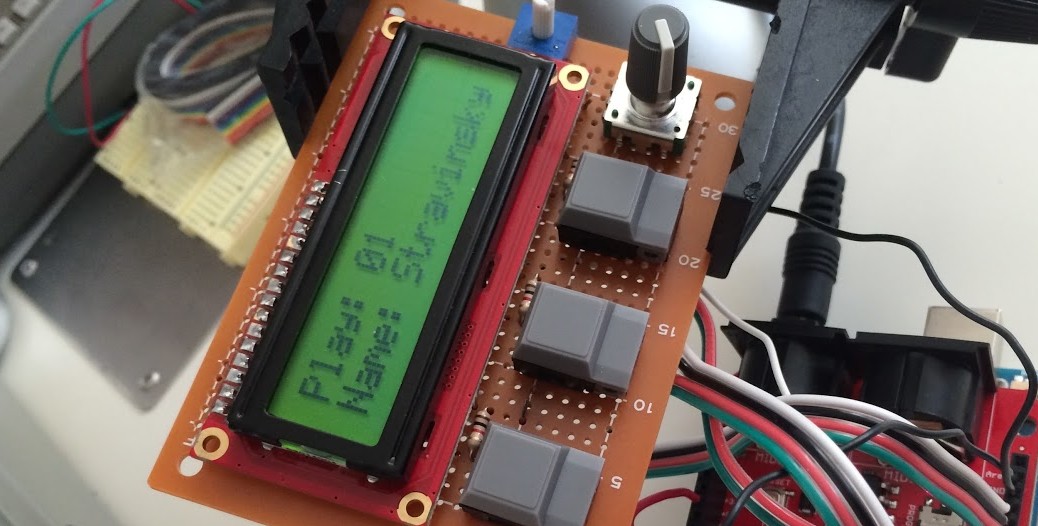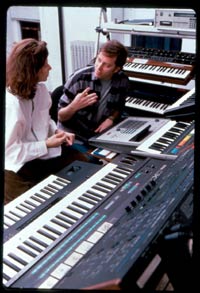
I’ve created a number of versions of “The Rotator” over the years. This video details one of the first versions that involved creating custom hardware based on the Arduino micro-controller and several parts scavenged from various bits and pieces I had lying around.
Then a couple of years ago while in Japan I made a field trip to “Electric City” in Akihabara where I was able to buy a bunch of electronics parts that allowed me to start work on yet another version.

I wanted to start again with improved hardware and a better layout. I was really excited to find what appeared to be Prophet-V-style gray buttons and some decent push-button rotary encoders. Within a few weeks I was able to get a working breadboard up and running (top left) where I could test the code and work on the software.
Enter the amazing Dennis Alichwer who totally crushed it on laying out a custom circuit board based on my design for the test harness.

The result was the “MB1” (middle left) – which stands for “Midi Box 1” or possibly “Mike Brecker 1” we’re not sure.
Anyway, I have a couple of boxes in use. One is running the latest rotator software, and the other is running an alpha version of a new toy I’m working on called MidiBot.
Update: Feb 2018
I’ve recently gotten so many requests from people wanting to buy rotators, it just didn’t seem practical to build them myself. So I spent the last month or two working on a port to a MidiFX plugin.  I’ve just released a VST and an AU version of the plugin for use in Logic Pro X and MainStage as well as other DAW environments. I’m quite pleased with the UI and it’s proven to be even more flexible than the hardware version in that it can support many more voices and rotations.
I’ve just released a VST and an AU version of the plugin for use in Logic Pro X and MainStage as well as other DAW environments. I’m quite pleased with the UI and it’s proven to be even more flexible than the hardware version in that it can support many more voices and rotations.
Here’s a brief example of what it can do harmonically to some simple triads!


 As a kid, I learned to play folk guitar during the early sixties, and I’d experimented with a number of “open tunings”. Though I knew a couple of standard tunings used for bottleneck blues and such, I didn’t take much notice until I started listening to Joni Mitchell.
As a kid, I learned to play folk guitar during the early sixties, and I’d experimented with a number of “open tunings”. Though I knew a couple of standard tunings used for bottleneck blues and such, I didn’t take much notice until I started listening to Joni Mitchell.